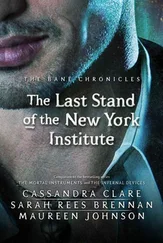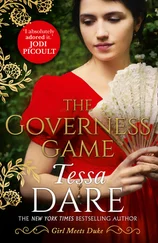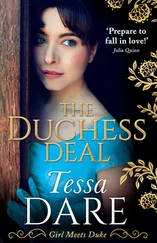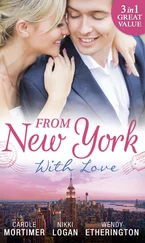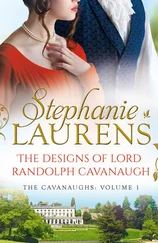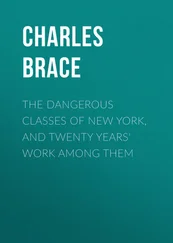Early on a Saturday evening that summer of 1959, when I was at my typewriter trying to finish a piece that was due the following Monday at Harper’s Magazine , I got a call from Billie Holiday’s friend Maely Dufty. I had met Maely through the narcotics committee of the East Harlem Protestant Parish, where she was one of a number of people from around the city who came to help addicts who were trying to get off heroin.
Maely asked if I would help her in an emergency. Billie Holiday was in the hospital, dying, and the police were stationed in her room. Maely and Louis McKay had written a petition asking the city to remove the police from her bedside and allow Billie to die in peace, without police harassment in her final days and hours. They wanted to get as many signatures as possible and present the petition the following day, while there was still time.
I said of course I would help. I took the subway uptown to Maely’s, and she introduced me to McKay and gave me the petitions. Then I set out on Saturday night to get signatures. I thought it would be easy. I figured people would be lining up to sign for one of the great singers of our time.
I was wrong. The old McCarthyite fear of signing your name to anything was still alive in the land, even in New York. The attitude of many people I asked was summed up by a young man I encountered at a party at Ted the Horse’s apartment who nervously refused on the grounds that “I’m not a signer.”
I figured my only hope was to find some politically aware citizens, so I hurried over to a meeting of the Young Socialist League and asked Mike Harrington if I could make an appeal for the petition. Mike sympathized at once. He signed it himself, then interrupted the debate going on at his meeting, introduced me, explained the petition, and urged everyone to sign it. Out of a crowd of about forty people, I got eight or nine signatures.
I hit the White Horse, the San Remo, Louis’, and found more suspicious people unwilling to help. And this was the Village! Finally, around one o’clock in the morning I wearily took the IRT back uptown and handed over a sheet with about twenty names on it to Maely and Louis, and explained it was the best I could do. They thanked me.
Maely was doing everything she could think of to ease the pain of Billie’s last days, and as part of that effort she called Reverend Norm Eddy of the East Harlem Protestant Parish. “Maely took me up to see her,” Norm recalls. “She was under guard, which was ridiculous—there was no way she could leap out of that hospital bed and escape. Maely and I were among the few friends who came to visit. Maely asked me to come because she recognized that Billie had a deep faith. A priest had visited her, and Maely wanted to bring a minister. I felt different because I didn’t know Billie Holiday, but I went.
“The first time I visited, Billie was fully conscious and we talked, but when she signed a paperback copy of her book for me, Lady Sings the Blues , she was so weak and out of it she couldn’t spell her name [it is signed “Billie Holday”]. The next day she was in an oxygen tent, and she breathed in and out saying, ‘Oh God, oh God.’ Three or four days later, people were lined up for three blocks at the funeral parlor, but she died alone.”
Frank O’Hara wrote a poem called “The Day Lady Died” that not only paid tribute to Billie Holiday but beautifully captured a feeling of those times.
It is 12:20 in New York a Friday
three days after Bastille day, yes
it is 1959 and I go get a shoeshine
because I will get off the 4:19 in Easthampton
at 7:15 and then go straight to dinner
and I don’t know the people who will feed me
I walk up the muggy street beginning to sun
and have a hamburger and a malted and buy
an ugly NEW WORLD WRITING to see what the poets
in Ghana are doing these days
I go on to the bank
and Miss Stillwagon (first name Linda I once heard)
doesn’t even look up my balance for once in her life
and in THE GOLDEN GRIFFIN I get a little Verlaine
for Patsy with drawings by Bonnard although I do
think of Hesiod, trans. Richard Lattimore or
Brendan Behan’s new play or Le Balcon or Les Negres
of Genet, but I don’t, I stick with Verlaine
after practically going to sleep with quandarines
and for Mike I just stroll into the PARK LANE
Liquor Store and ask for a bottle of Strega and
then I go back where I came from to 6th Avenue
and the tobacconist in the Ziegfeld Theatre and
casually ask for a carton of Gauloises and a carton
of Picayunes and a NEW YORK POST with her face on it
and I am sweating a lot by now and thinking of
leaning on the john door in the 5 SPOT
while she whispered a song along the keyboard
to Mal Waldron and everyone and I stopped breathing
In the summer of 1962 the Five Spot moved three blocks north. As Hettie Jones, who lived across the street, explained, “To push out the poor it barely acknowledged, the city had condemned certain ‘slum areas.’ One began just south of us, across Fifth Street, and included the Five Spot.” In How I Became Hettie Jones she remembered that summer also as the time Marilyn Monroe died and Martin Luther King was jailed in Albany, Georgia—and Jamaica and Trinidad and Tobago became free nations.
Helen Tworkov recalls the following summer of 1963 as the last big time at the Five Spot, and by that fall “people weren’t crowding in like they used to, and everyone seemed to be going to Gerde’s Folk City.”
Ray Grist, who had worked as a bartender at the Five Spot, says of the new era, “The folk singers took over MacDougal Street. Cosby was the comedian at Gerde’s Folk City, and Bob Dylan, Richie Havens, and Odetta were there, then the Beatles came, and after that it was all disco.”
David Amram played the Five Spot for the last time when it moved to St. Marks Place. “They were having a hard time, doing their best to hang in there,” he says. “Joe Termini was so generous, so bighearted, but he didn’t really have a business sense. I played a benefit to help the Five Spot stay open, but finally it closed in the seventies. It couldn’t survive the changing times in New York.”
12. In Exile Till We Come Again
One morning I awoke in my high-ceilinged, floor-through apartment on East 12th Street—the best apartment I’d ever had, wangled by getting a copy of the Village Voice classified ads before the paper hit the newsstand—and the high steel scream of garbage trucks devouring the city’s waste like menacing mechanical dinosaurs crawling through the street below my third-floor window pierced my habitual hangover like a rusty kitchen knife thrust into the tenderest part of my brain, reaching even deeper, to something that seemed like my very soul. Feeling hot and in need of fresh air, I reeled to the living room and opened the window to one of those gray, anonymous days that could have been any season, since the smog was heavy and soot seemed to clog the nostrils. I blinked and saw small buds like dabs of pale green paint on the otherwise bare, scraggly tree whose skinny limbs reached awkwardly upward like pleading arms. It was spring of 1962, May, almost my birthday. Thirty .
The same scene would have looked different to me, more pleasing, less menacing, even a year before (in my twenties). Then the sight that would have secretly cheered me was of the office across the street—Fairchild Publications, home of Women’s Wear Daily —where I could look down and see through its windows men and women in suits and ties, dresses and heels, moving efficiently between desks like bees in a hive, regimented to a nine-to-five life. I’d managed to escape that life by virtue of living by the pen, no matter how hard or precarious it was to patch together the rent with checks from magazines and modest advances for books and maybe a grant—if not from Guggenheim, as Ivan Gold had gotten, then one from another foundation, the Ingram-Merrill perhaps, which bestowed something on my worthiest literary friend, Robert Phelps. Our highly irregular (in terms of timing) checks that were always “in the mail” from magazine and publisher were supplemented sometimes with a temporary research job for a good cause: Mike Harrington had once worked for the Fund for the Republic, on a study of blacklisting in movies and television. From time to time Seymour Krim did stints as an editor, lending literary class to the new girlie mags, where he could assign work to free-lance friends (like me) for a good fee—up to $500 a shot, enough to live on for a month.
Читать дальше

